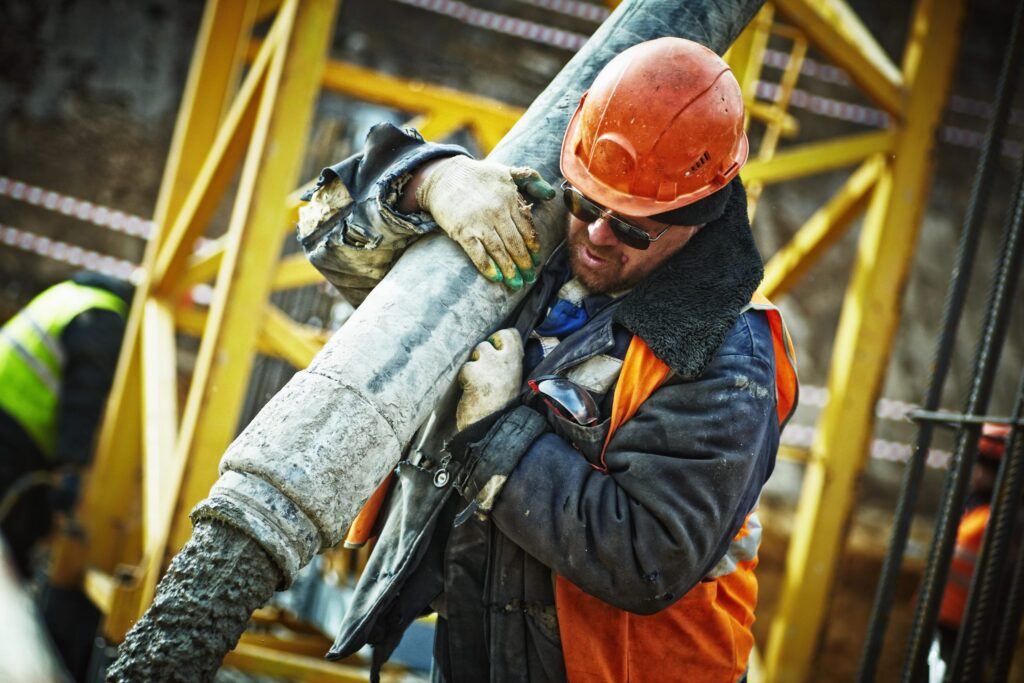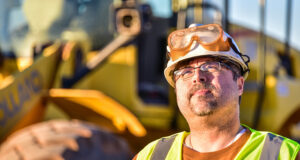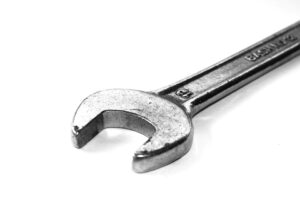
Concrete Work Safety: Looking Beyond Traditional Job Site Considerations
Fall prevention, personal protective equipment (PPE) and on-the-job training are important aspects of construction and concrete work safety, but they aren’t the be all and end all. The truth is, there are a myriad of other issues that come into play on the job site which can have lasting effects on team members’ health.
In this blog post, General Chipping takes a moment to consider aspects of construction and concrete work safety that crews don’t often address — but which are important, nonetheless. Read on for insights and tips for keeping your crews prepared in all aspects of their work.
Factor Healthy Ergonomics into Concrete Work
Ergonomics, or the way people use the equipment and furniture around them, directly impact how quickly team members become fatigued — and can affect their health. The U.S. Centers for Disease Control and Prevention (CDC) notes that physical stressors such as exposure to vibration, lifting heavy objects or working in awkward postures can all have long-term effects in the form of aches and pains, injuries and, in extreme cases, permanent musculoskeletal disorders (MSDs).
Educate Crew Members About Safe Lifting Practices
OSHA notes that 2 million back injuries occur throughout the U.S. each year — and about half of those are due to injuries sustained on job sites. These safe lifting practices from OSHA can help team members sidestep injury.
- Avoid Lifting Heavy, Ungainly Objects: Before attempting to lift an object, assess the situation. Would it be better to use a hand truck or forklift? Should you ask a coworker for help? Would gloves give you a better grip?
- Lift with the Legs: Stand close to the object, place your feet shoulder-width apart and only bend your hips and knees when picking an object up. Try maintain a straight back, and keep the load close to your body while moving it.
- Don’t Twist into Awkward Positions: Keep your back as straight as you can. If you must turn while carrying an object, take small steps until you are facing the proper direction.
Discuss How to Avoid Repetitive Motion Injuries and Risks of Using Vibrating Tools
Construction and concrete work often require an individual to perform a single task over and over again — or use of tools that subject the body to vibrations. These practices can wreak havoc on the body.
Among other advice, the Texas Department of Insurance encourages companies to ensure team members have hand tools suited to their particular jobs — and to purchase tools that are as lightweight as possible. Limit exposure to vibrations by encouraging team members to wear gloves or add padding to equipment seats. Regular breaks also go a long way toward keeping crew members safe.
Teach Team Members How and Why to Stretch for Their Work
Practicing proper stretching and warm-up techniques before starting a job can help a person avoid injury and muscle strain. Here are some tips for your team.
- Warm Up Before Beginning a Job: This helps prevent injury and aids in muscle recovery by making muscles more limber. At the end of the day, it typically means less strain, cramping and soreness.
Tip: Before starting your day’s work, take three to five minutes to do some jumping jacks or an easy jog. Then, follow it up with stretches for workers with demanding jobs. - Take Breaks While Working: Remember, you may not want a break, but your aching muscles do. Your back and spine, hands and wrists, knees, neck and shoulders are most vulnerable to strains and pulls.
Tip: A few times an hour, step back from your job for some light stretching and to shake out your muscles. Resist the urge to push through discomfort, and instead view it as a signal that it’s time for a break.
- Stretch When the Work is Over: Construction, concrete and other physical labor are exercises in endurance. Stopping cold will lead to more stiffness and strain.
Tip: Cool-down exercises help you sleep better at night and feel better the next day.

Factor Mental Health Needs into Your Team’s Safety Protocol
Mental health is something construction crews often fail to take into consideration — even though, as Dozr reports, the suicide rate among construction pros is three times the U.S. average. Here are a few things to consider when it comes to managing mental health in the construction world.
- One Team Member’s Stress Can Impact Everyone: An irritable, stressed-out crew member might create a tense environment by lashing out at others. Worse yet, if their stress is leading to sleepless nights or clouded thoughts, it can pull attention away from their work. That could lead to costly project interruptions or life-changing injuries.
- Mental and Physical Health Are Closely Linked: Mental health isn’t all in your head. Injuries and pain can have an impact, too. In fact, Construct Connect notes that a reported 85% of people with chronic pain also report bouts of depression. Urge crew members to seek professional medical attention if an injury occurs, and to go for follow-up care, too. You might also consider incorporating wellness measures into your team’s day-to-day. This could be something as small as leading group stretches before starting a job, inviting the team for a jog after work or working wellness into company benefits offerings. Getting people moving can help clear the head and keep them focused.
- Open Communication Can Help: People typically don’t like talking about their feelings and mental health, but doing so can save lives. Take time during toolbox talks to ask how crew members are feeling. If you sense unease about a particular task or find team members are experiencing other stresses, ask how the team can help. Simply relieving a person of one task, or showing support, can go a long way. Encourage them to let you know if they find themselves feeling overwhelmed and share resources they might take advantage of. (Associated Builders and Contractors is a great place to start!)
Incorporate Safety Toolbox Talks into Your Team’s Daily Work
For a company that has its sights set on safety, toolbox talks can be a great resource. These meetups typically take place at the start of the workday — or right before a team begins a specific job — and are designed to get everyone working and thinking together. Even better? There’s no limit to the topics they can cover.
The overall goal is to focus on upcoming projects or draw from those that were recently completed, talking through safety best practices, areas your team could stand to improve and ways to create safer, more streamlined operations. Here are tips for successful toolbox talks.

- Keep it Short: Try to structure your safety toolbox talks so they can be carried out in 30 minutes or less, while still getting solid information across. It often helps to block out a specific day and time each week (or month), such as before shifts start on a Monday morning.
- Keep to the Topic: When you have a large portion of your team in one place, conversations can go off the rails quickly. Emphasize to your team that these meetings are about safety and strategic practices. It helps to limit meetings to one or two specific topics, factoring in time at the end for any important company announcements or updates.
- Keep the Door Open: Team members should know their ideas are welcomed and encouraged. Make sure they know who to go to if there’s a topic they’d like to discuss at an upcoming meeting, or what to do if they see unsafe practices taking place. Oftentimes the best ideas come from crew members who see and experience things while out on the job.
- Keep a Plan: Make life simpler by planning your safety toolbox talks well in advance. Look to holidays, seasonal trends and experiences on your individual job sites to get you started. Need resources to get the ball rolling? The National Safety Council and Occupational Safety and Health Administration (OSHA) are great places to start. Your own workplace manuals likely offer information you can repurpose, too.
